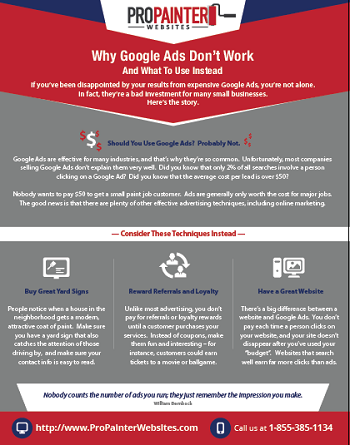Discover The Effect Of Seasonal Elements On The Efficiency Of Commercial Outside Paint And Recognize The Ideal Times To Attain Enduring Results For Your Project
Discover The Effect Of Seasonal Elements On The Efficiency Of Commercial Outside Paint And Recognize The Ideal Times To Attain Enduring Results For Your Project
Blog Article
Author-Ford Urquhart
When you're planning a business external painting task, seasonal variables can make or damage your outcomes. You'll wish to consider just how temperature level and moisture effect paint application and drying times. Picking the appropriate season can guarantee your paint adheres appropriately and lasts much longer. However which seasons are really the most effective for this kind of job? Allow's discover the crucial elements that can influence your task's success.
The Effect of Temperature on Paint Application
When you're preparing a commercial exterior paint job, the temperature can considerably affect how well the paint sticks and dries.
Ideally, you want to repaint when temperatures range in between 50 ° F and 85 ° F. If it's also cold, the paint may not cure correctly, causing concerns like peeling or breaking.
On the flip side, if it's as well warm, the paint can dry out as well promptly, avoiding correct bond and causing an uneven finish.
You ought to additionally take into consideration the moment of day; morning or late afternoon uses cooler temperature levels, which can be much more desirable.
Constantly inspect the manufacturer's referrals for the specific paint you're making use of, as they typically offer advice on the suitable temperature level range for optimal outcomes.
Humidity and Its Result on Drying Times
Temperature level isn't the only ecological variable that influences your business exterior paint task; humidity plays a substantial role as well. High moisture degrees can decrease drying times drastically, affecting the total quality of your paint work.
When the air is saturated with dampness, the paint takes longer to treat, which can result in concerns like inadequate bond and a higher threat of mold development. If you're repainting on an especially damp day, be prepared for extended wait times between layers.
It's important to check neighborhood climate condition and plan accordingly. Preferably, go for https://www.thetelegraph.com/news/article/Painting-of-Wood-River-veterans-finds-a-home-17564668.php in between 40% and 70% for optimal drying out.
Keeping these consider mind guarantees your project stays on track and delivers an enduring coating.
Best Seasons for Commercial Exterior Painting Projects
What's the best time of year for your commercial external paint jobs?
Spring and very early loss are typically your best bets. Throughout these seasons, temperatures are moderate, and moisture levels are often lower, creating suitable conditions for paint application and drying.
Prevent summer's intense heat, which can create paint to completely dry also swiftly, bring about poor attachment and coating. Similarly, wintertime's chilly temperature levels can impede proper drying out and curing, running the risk of the durability of your paint job.
Aim for days with temperature levels in between 50 ° F and 85 ° F for ideal results. Remember to inspect the regional weather forecast for rain, as wet problems can ruin your project.
Planning around Related Web Page ensures your painting task runs smoothly and lasts longer.
Conclusion
Finally, planning your business outside painting jobs around seasonal factors to consider can make a significant difference in the result. By organizing job throughout the perfect temperatures and humidity levels, you'll make sure much better attachment and drying times. Remember to watch on local weather prediction and pick the right time of year-- spring and early fall are your best bets. Taking these actions will help you attain a sturdy and professional coating that lasts.
